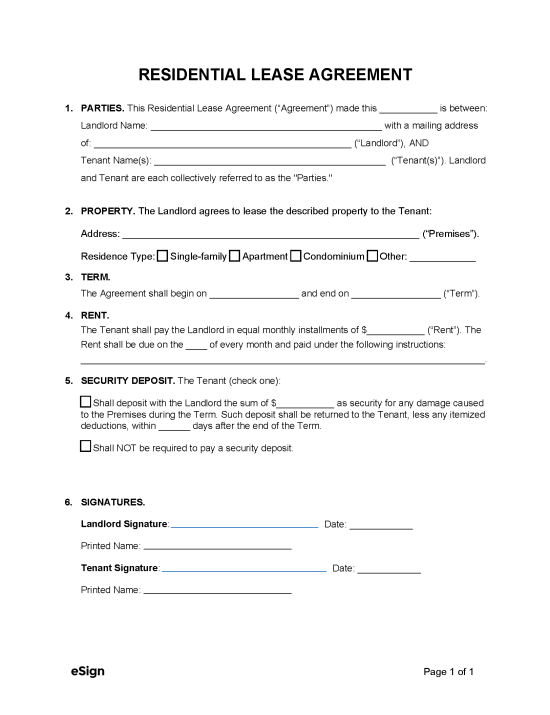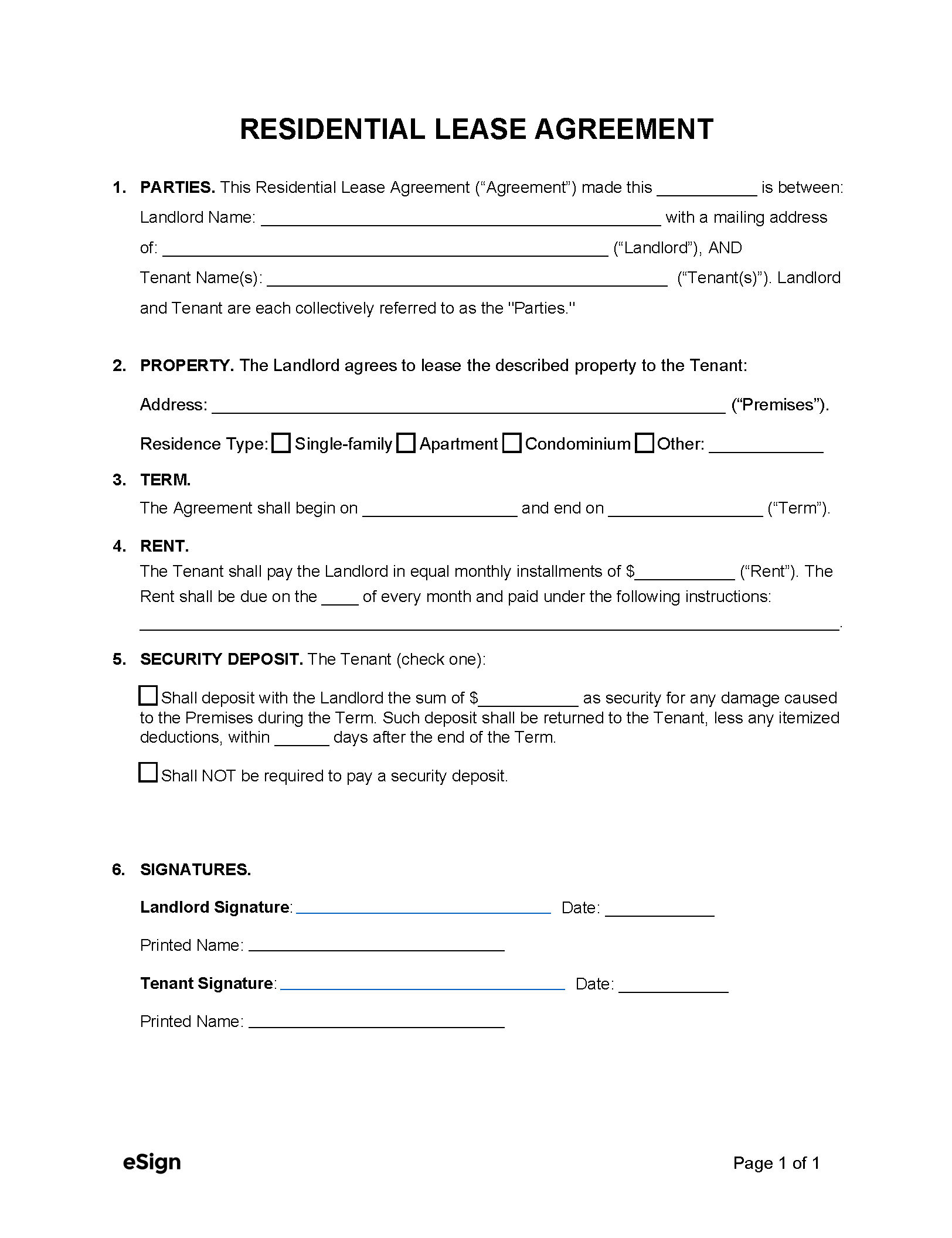Legally Binding
A simple lease is the bare minimum that must be entered to create a legally binding rental contract. It does not include any required State or Federal disclosures.
Simple vs. Standard
A simple lease offers basic terms covering a rental arrangement, while a standard lease outlines a comprehensive list of landlord and tenant responsibilities.
What’s Included?
The following must be included (at a minimum) to have a binding lease:
- Parties’ Names: Names of the landlord and tenant(s).
- Property Description: Street address and property details.
- Rent Amount ($): An amount of money a tenant pays for occupying the property.
- Term (timeframe): The start and end date.
- Signature Area: All parties must sign for this form to be legally binding.
Sample
Download: PDF, Word (.docx), OpenDocument
RESIDENTIAL LEASE AGREEMENT
1. PARTIES. This Residential Lease Agreement (“Agreement”) made on [TODAY’S DATE] is between:
Landlord Name: [LANDLORD’S NAME] with a mailing address of:
[LANDLORD’S ADDRESS] (“Landlord”), AND
Tenant Name(s): [TENANT NAME(S)] with a mailing address the same as the rental property (“Tenant”).
2. PROPERTY. The Landlord agrees to lease the described property to the Tenant:
Mailing Address: [PROPERTY ADDRESS]
Residence Type: ☐ Single-family ☐ Apartment ☐ Condo ☐ Other: [OTHER]
3. TERM. The Agreement shall begin on [START DATE] and end on [END DATE].
4. RENT. The Tenant shall pay the Landlord in equal monthly installments of $[RENT]. The Rent is due on the [#] of every month and must be paid by: [RENT PAYMENT INSTRUCTIONS].
5. SECURITY DEPOSIT. The Tenant is (check one):
☐ – Required to deposit the amount of $[SECURITY DEPOSIT] as security for any damage caused to the rental property during the lease term. Such deposit shall be returned by the Landlord to the Tenant at the end of the lease term, less itemized deductions, within [#] days after the Tenant has delivered possession of the rental property.
☐ – Not required to pay a security deposit.
6. SIGNATURES.
Landlord Signature: ________________________ Date: _____________
Printed Name: ________________________
Tenant Signature: ________________________ Date: _____________
Printed Name: ________________________

